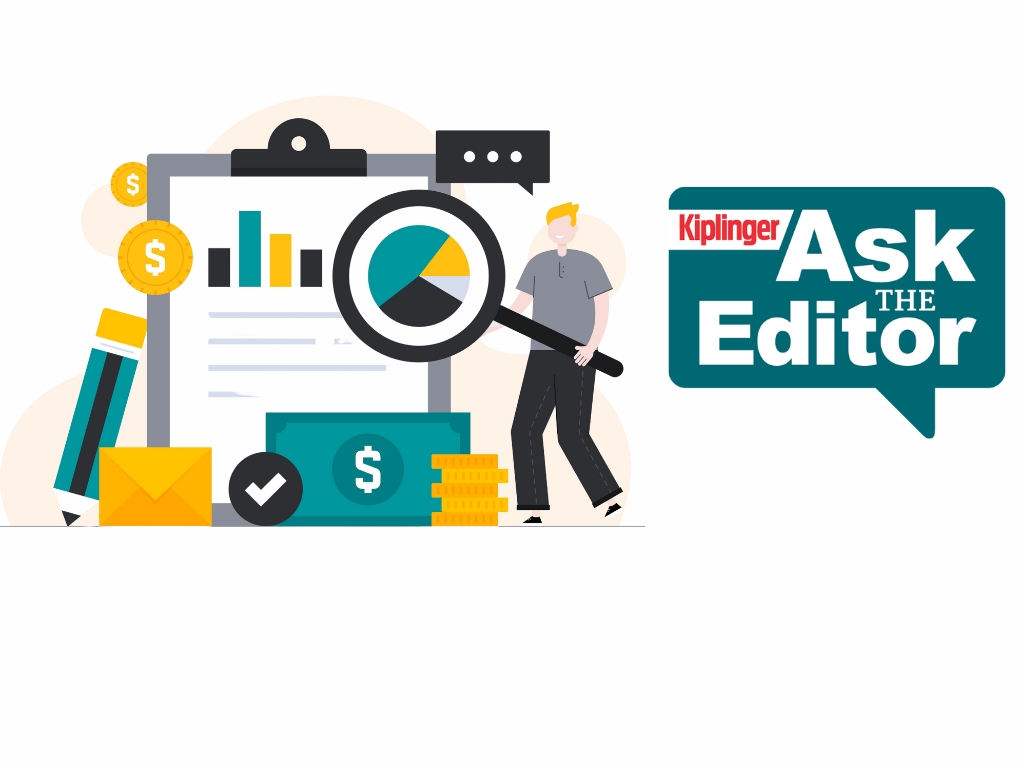Navigate Overseas Investing With Low-Volatility Funds
Low-vol funds can help you ride out the ups and downs of foreign markets.

Foreign stocks have taken investors on a harrowing ride in recent years. That has left many investors believing that the risk in international markets outweighs the reward. But a growing number of funds that focus on low-volatility stocks offer wary shareholders a low-risk way to approach these uncertain markets.
Chances are you’re light on international stocks, given the long bull market in U.S. stocks. The average American stock portfolio holds 30% in foreign stocks, says Fran Kinniry, head of Vanguard’s investment strategy group. But international firms make up half of the world’s total market value. And, Kinniry says, many investors don’t own any international stocks. “We’d rather see more of those investors put their toe in the water and boost their foreign stock exposure to 10% to 20% than debate whether 30%, 40% or 50% is better,” he says.
Low-volatility funds offer a smoother path to international markets. “Smoothing the ride helps investors stay invested longer and stay true to their goals,” says Holly Framsted, head of smart-beta ETFs at BlackRock’s iShares.
From just $107.88 $24.99 for Kiplinger Personal Finance
Become a smarter, better informed investor. Subscribe from just $107.88 $24.99, plus get up to 4 Special Issues

Sign up for Kiplinger’s Free Newsletters
Profit and prosper with the best of expert advice on investing, taxes, retirement, personal finance and more - straight to your e-mail.
Profit and prosper with the best of expert advice - straight to your e-mail.
The benefits of low-volatility investing came to light decades ago. Researchers found that the traditional thinking—that the more risk you take on, the bigger the reward—didn’t hold true when it came to volatility. In fact, high-volatility stocks lagged the market over time, and low-volatility stocks—deemed less risky because they exhibit less price variability than the average stock—outperformed over the long haul. “You earn better risk-adjusted returns with less-volatile stocks,” says Ryan Issakainen, ETF strategist for First Trust. “A bunch of behavioral reasons explain this, but the empirical evidence is there.”
Assets in low-vol ETFS have grown nearly 40% since the end of 2018.
Winning more by losing less. Over short periods, the returns of low-volatility stocks typically fail to match their benchmarks—in both up and down markets. New research from S&P Dow Jones Indices confirms earlier studies: Low-volatility stocks outperform other stocks in down markets far more than they lag in up markets.
Low-vol funds are hot right now. Assets in exchange-traded funds that follow the strategy have grown nearly 40% since the end of 2018, to $81 billion in June 2019, compared with a 20% gain for U.S. stock ETFs overall. But about half of the ETFs in the category are less than two years old—too short a track record for us to recommend.
Each of the five funds on our short list has at least a five-year track record. They don’t all follow the same approach to low-volatility investing. Some pay close attention to sector and country weightings; others pay no heed to either. But they all deliver a less bumpy ride than broad international markets.
Invesco S&P International Developed Low Volatility ETF
Invesco S&P International Developed Low Volatility (symbol IDLV) offers a pure approach to low-volatility investing. It tracks an index of the 200 least-volatile large- and midsize-company stocks in a subset of a Standard & Poor’s global index that excludes the U.S. and emerging countries. Stocks with the lowest volatility over the past 12 months receive the most weight in the index, which is rebalanced four times a year. It’s built “for investors who want to dial down risk,” says Nick Kalivas, a specialist in stock ETF strategies at Invesco.
The ETF has delivered on that front and more. Over the past five years, it outpaced 93% of its peers—funds that invest in large, foreign firms with both growth and value traits—with 18.1% less volatility.
The index behind the ETF has some guardrails in place, but it doesn’t set limits on sector or country exposures. Recently, 25% of the fund’s assets were in financial stocks; real estate firms represented another 26%; and utilities constituted 13%. The tilt toward dividend payers gives the fund a 3.5% yield. Top country exposures are Canada (where 22.1% of assets are invested), Japan (17%) and Australia (8.4%).
iShares Edge MSCI Min Vol EAFE ETF
Min Vol in iShares Edge MSCI Min Vol EAFE (EFAV) stands for minimum volatility, which is important to note because minimum volatility and low volatility are two different things. Generally, low-volatility strategies focus on stocks with the smallest price movements, with no constraints on sector weightings.
Funds following minimum-volatility strategies, however, prioritize diversification as much as low volatility. “With minimum volatility,” says BlackRock’s Framsted, “it’s not just about buying low-risk stocks.” Such funds aim to stay in step with broad market index sector weightings, and in the case of international funds, country exposures, too. The goal is to offer a low-risk portfolio that can still work as a diversified core holding. “We don’t want a strategy that will get concentrated in defensive sectors,” says Framsted.
The underlying index of iShares Edge MSCI Min Vol EAFE starts with the MSCI EAFE index, which tracks large-company stocks in developed foreign countries. Then the index is tweaked using computer algorithms to meet the goal of low overall volatility within its sector and country limitations. The fund rebalances twice a year.
The result is a rough match of the broad index, but not an exact one. The top three countries in iShares Edge MSCI Min Vol EAFE—Japan (29% of assets), Switzerland (13.8%) and the U.K. (11.6%)—vary from that of the parent index, which still puts Japan at the top, but with 24% of assets, followed by the U.K. at 16.7% and France at 11.2%. Over the past five years, the ETF was 26% less volatile than the broad EAFE index, and it returned an annualized 5.5%, trouncing the 1.8% gain in the EAFE.
iShares Edge MSCI Min Vol Emerging Markets ETF
Emerging markets can give investors a particularly rocky ride. Over the past five years, the MSCI emerging markets index was roughly 30% more volatile than the EAFE index. iShares Edge MSCI Min Vol Emerging Markets (EEMV) is best for mitigating the bumps. It uses a similar methodology to its iShares EAFE counterpart, discussed above, with an eye toward maintaining the country and sector diversification of the MSCI Emerging Markets index while maintaining a low-volatility profile overall for the portfolio.
Over the past five years, the ETF was 25.5% less volatile than the MSCI Emerging Markets index. Its five-year annualized return, 0.9%, just beats the EM index. Bank of Central Asia, Taiwan Mobile and Taiwan Cooperative Financial are among the fund’s top holdings.
Vanguard Global Minimum Volatility Fund
Vanguard Global Minimum Volatility (VMVFX), an actively managed mutual fund, is a bit of a cheat on this list because half of its portfolio is invested in U.S. stocks. But the rest is devoted to foreign stocks, including 7% of assets invested in emerging-markets stocks. The fund’s five-year record beats 91% of its peers—funds that invest in stocks all over the world—with 45.5% less volatility.
Manager Antonio Picca uses computer models to home in on stocks in the FTSE Global All Cap index that are expected to have lower volatility than the broad global stock market. The fund holds roughly 500 stocks and hedges against currency risk. Picca has leeway to adjust sector and country exposures, though he stays roughly in line with the FTSE index.
Although Vanguard often offers ETF equivalents for its mutual funds, it doesn’t for Vanguard Global Minimum Volatility. So if you’re looking for an all-in-one ETF that holds U.S. and foreign stocks, consider iShares Edge MSCI Min Vol Global ETF (ACWV). Over the past five years, the ETF beat the broad benchmark, which tracks stocks in 49 countries, with 27% less volatility. Waste Management, Nestlé and Consolidated Edison are among the fund’s top holdings.
Profit and prosper with the best of Kiplinger's advice on investing, taxes, retirement, personal finance and much more. Delivered daily. Enter your email in the box and click Sign Me Up.

Nellie joined Kiplinger in August 2011 after a seven-year stint in Hong Kong. There, she worked for the Wall Street Journal Asia, where as lifestyle editor, she launched and edited Scene Asia, an online guide to food, wine, entertainment and the arts in Asia. Prior to that, she was an editor at Weekend Journal, the Friday lifestyle section of the Wall Street Journal Asia. Kiplinger isn't Nellie's first foray into personal finance: She has also worked at SmartMoney (rising from fact-checker to senior writer), and she was a senior editor at Money.
-
 Ask the Editor: How to Get Ready for Tax Filing Season
Ask the Editor: How to Get Ready for Tax Filing SeasonAsk the Editor In this week's Ask the Editor Q&A, Joy Taylor answers questions on the IRS tax filing season and your 2025 tax return
-
 4 Simple 2026 Money Targets to Aim For (And How to Hit Them)
4 Simple 2026 Money Targets to Aim For (And How to Hit Them)While January is the perfect time to strengthen your financial well-being, you're more likely to succeed if you set realistic goals and work with a partner.
-
 Everyone Needs an Estate Plan (Seriously, Even You)
Everyone Needs an Estate Plan (Seriously, Even You)If you've acquired assets over time, even just a home and some savings, you have an estate. That means you need a plan for that estate for your beneficiaries.
-
 Best Mutual Funds to Invest In for 2026
Best Mutual Funds to Invest In for 2026The best mutual funds will capitalize on new trends expected to emerge in the new year, all while offering low costs and solid management.
-
 How Inflation, Deflation and Other 'Flations' Impact Your Stock Portfolio
How Inflation, Deflation and Other 'Flations' Impact Your Stock PortfolioThere are five different types of "flations" that not only impact the economy, but also your investment returns. Here's how to adjust your portfolio for each one.
-
 Why I Still Won't Buy Gold: Glassman
Why I Still Won't Buy Gold: GlassmanOne reason I won't buy gold is because while stocks rise briskly over time – not every month or year, but certainly every decade – gold does not.
-
 Should You Use a 25x4 Portfolio Allocation?
Should You Use a 25x4 Portfolio Allocation?The 25x4 portfolio is supposed to be the new 60/40. Should you bite?
-
 Retirement Income Funds to Keep Cash Flowing In Your Golden Years
Retirement Income Funds to Keep Cash Flowing In Your Golden YearsRetirement income funds are designed to generate a reliable cash payout for retirees. Here are a few we like.
-
 Smart Ways to Invest Your Money This Year
Smart Ways to Invest Your Money This YearFollowing a red-hot run for the equities market, folks are looking for smart ways to invest this year. Stocks, bonds and CDs all have something to offer in 2024.
-
 10 2024 Stock Picks From An Investing Expert
10 2024 Stock Picks From An Investing ExpertThese 2024 stock picks have the potential to beat the market over the next 12 months.
-
 Vanguard's New International Fund Targets Dividend Growth
Vanguard's New International Fund Targets Dividend GrowthInvestors may be skittish about buying international stocks, but this new Vanguard fund that targets stable dividend growers could ease their minds.